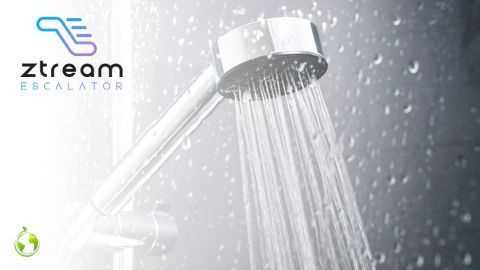The word ‘scale’ gets thrown around a lot in the streaming industry. It describes a video platform’s ability to handle fluctuations in user demands. These fluctuations can be caused by both an increase in audience size and an increase in incoming live streams.
When it comes to last-mile delivery, scaling allows content distributors to reach millions of viewers simultaneously — which is far from easy when distributing video content across the world.
Why? For one, reliability and scalability are at odds with each other. The bigger an audience grows, the harder it is to ensure a high-quality experience and uninterrupted signal. What’s more, it’s often impossible to estimate how many people will tune into a given broadcast.
Just consider the 2022 FIFA Men’s World Cup. Nearly 26 million viewers watched the live game, 9 million of whom streamed it online. Such a giant leap in viewership from the years prior couldn’t have been predicted. That means the organizations streaming the game had to have a solution in place that could quickly accommodate any fluctuations without impacting viewers.
OTT services like Fubo, Netflix, and Amazon Prime Video aren’t the only organizations facing this challenge. Quickly scaling is also critical for user-generated content (UGC) platforms like YouTube, TalkShopLive, and Instagram Live. For these applications, the challenge often occurs on the contribution side of a streaming workflow.
When an important even happens, the number of Live streams on a platform may increase tenfold, requiring the platform to scale up in a snap.

Consider a café in Brussels, where a handful of people might stream to Instagram on a given night. Then imagine that a celebrity walks in. Countless patrons reach for their phones and go live. The number of streams published to Instagram increases tenfold, requiring the platform to scale up in a snap. In these scenarios, it’s not the audience size that matters, but rather the number of streams being published to a platform.
As the number of users on streaming platforms varies each day and hour, one of the biggest challenges that content distributors face is scaling their infrastructure to handle the constantly changing demand. Scaling is now a critical factor to consider for both first-mile ingest and last-mile delivery. Quickly accommodating these changes requires a dynamic solution for increasing capacity.
That’s where autoscaling comes into play.
What Is Autoscaling?
For streaming media platforms, autoscaling is critical to ensure that content reaches viewers during periods of increased traffic
Autoscaling describes when a streaming service automatically adjusts its resources based on demand. This means that as more users access the platform, the system automatically scales up to ensure quality and reliability. Conversely, as demand decreases, the system scales down to reduce resource usage and cost.
We’ve all encountered a stream that’s ill-equipped to scale. Whether it’s the dreaded buffering wheel or a black screen resulting from a failed stream, the end-user experience suffers immensely.
For streaming media platforms, autoscaling is critical to ensure that content reaches viewers during periods of increased traffic, without slowing down or crashing. It also provides agility to content distributors. Without the ability to automatically scale up and down, streaming providers would need to overprovision resources — leading to higher costs and inefficient resource utilization.
How Does Autoscaling Work?
Autoscaling works by monitoring key metrics related to viewership numbers, simultaneous live streams, and network capacity. Based on these metrics, the system automatically provisions additional resources — such as servers and databases — to handle the increased demand.
Autoscaling can be configured to scale horizontally or vertically, depending on the platform’s architecture. Horizontal scaling involves adding more instances of the same resource, such as adding more servers to handle increased traffic. Vertical scaling involves adding more resources to an existing instance, such as adding more memory to a server to handle the increased workload.
At Raskenlund, we’re introducing a new autoscaling solution that’s purpose-built for streaming media. Unlike traditional cloud autoscaling, our solution addresses the unique challenges involved in online video delivery.
There are three different models for triggering a system to autoscale. These include reactive, predictive, and scheduled. They work as follows:
- Reactive: As the name suggests, reactive scaling occurs when a change in the system prompts autoscaling to take place.
- Predictive: With predictive autoscaling, the system anticipates future changes in demand and proactively accommodates them by adding more resources. This ensures quicker scaling than the reactive model.
- Scheduled: Finally, scheduled autoscaling describes when a system is configured to increase capacity based on predictable load changes. This is a good route for streaming services that distribute content on a recurring schedule.
What Are the Benefits of Autoscaling?
Autoscaling can reduce wasteful practices across the video delivery ecosystem by scaling down during periods of low demand.
Content distributors benefit from autoscaling in several ways. It ensures:
- Availability and Reliability: Ensure uptime with infrastructure that can adapt to changing needs and prevent issues related to increased demand.
- Cost-Efficiencies: Leverage the resources you need when you need them, without over-investing.
- Green Streaming: Reduce wasteful practices across the video delivery ecosystem by scaling down during periods of low demand.
- Performance and User Satisfaction: Ensure that users receive fast and responsive service every time they go live or tune in by delivering consistent quality.
How Can You Take Advantage of Autoscaling?
In a world of viral videos and UGC video, autoscaling is a critical component of any streaming media platform. It enables the infrastructure to handle increased demand during peak hours without slowing down or crashing — improving availability, reliability, and user experiences. Autoscaling also provides cost savings and improved performance, making it a win-win for content distributors and their end users.

At Raskenlund, we’re introducing a new autoscaling solution that’s purpose-built for streaming media. Unlike traditional cloud autoscaling, our solution addresses the unique challenges involved in online video delivery. We’ll dive into this topic in our next article.
Interested in learning more? Contact us today or stay tuned for more info on how our customers are benefiting from the solution.



